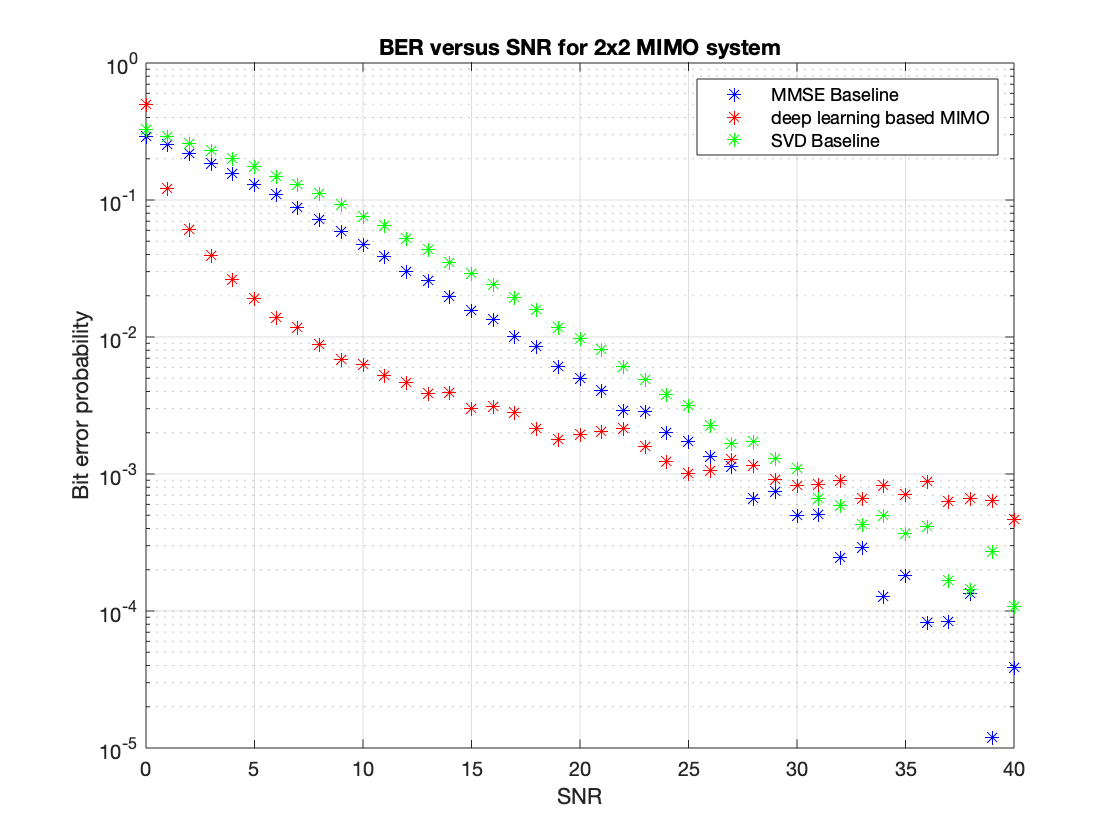Unofficial Pytorch implementation of Deep Learning-Based MIMO Communications (Timothy J. O’Shea)
This is the course project of Liu Haolin for CIE 6014 in CUHKSZ.
This project is running on Python 3.6 for the deep learning MIMO, and is running on Matlab 2019b for the MMSE and SVD MIMO baseline.
And it only contains 2x2 spatial multiplexing MIMO.
Pytorch and some other packages are required, use the following commands to install the package:
pip install -r requirements.txt
run the training by typing the following command:
python train.py --exp_name=experiment_name --gpu=0 --batch_size=6 --num_bits=2
after the model is trained, the weight file will be stored under ./checkpoints/experiment_name/xxx.pth
I provide a trained model in ./checkpoints/deep_MIMO/epoch_99.pth, you can type the following command the test this model:
python test.py --resume=./checkpoints/deep_MIMO/epoch_99.pth --gpu=0 --batch_size=6
test the model by specifying the path of the model's weight
python test.py --resume=./checkpoints/experiment_name/xxx.pth --gpu=0 --batch_size=6
It will print the BER performance of the model under different SNR.
the matlab codes for the baseline models is in "MIMO_baseline.m", you can use Matlab to directly run this file and obtain the BER performance of the baseline models.
The BER performance among MMSE baseline, SVD baseline, and the deep learning based MIMO is shown in the following figure:
 For SNR lower than 30dB, deep learning based MIMO outperforms the baseline. However, when SNR is higher than 30dB, two baseline models works better, and MMSE baseline is the best among them.
For SNR lower than 30dB, deep learning based MIMO outperforms the baseline. However, when SNR is higher than 30dB, two baseline models works better, and MMSE baseline is the best among them.